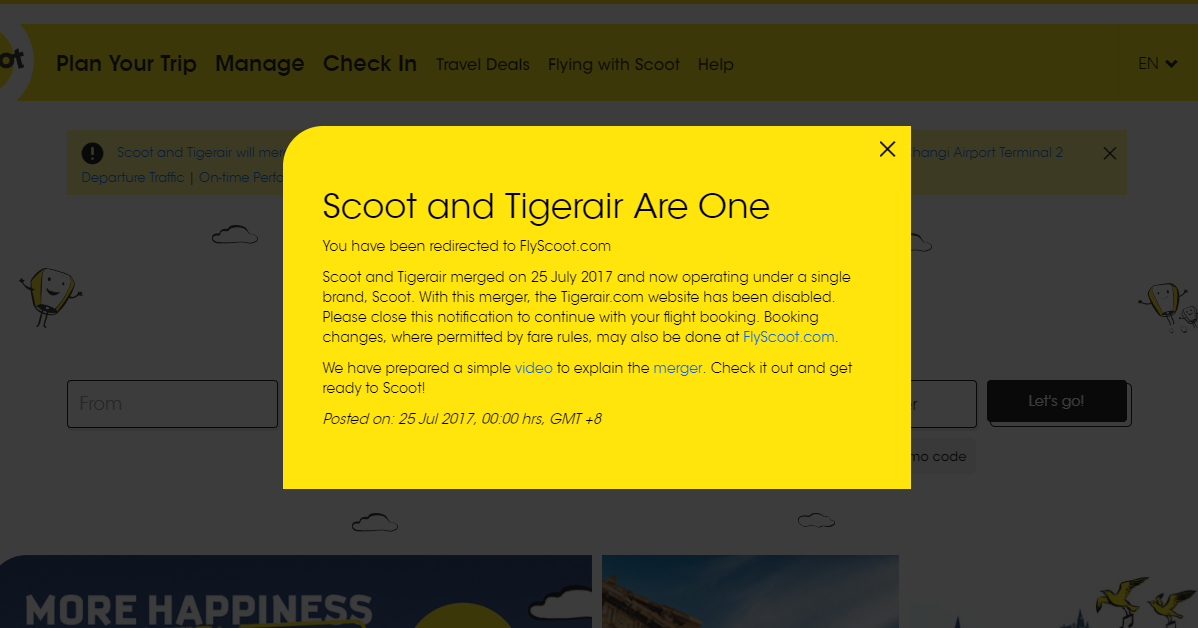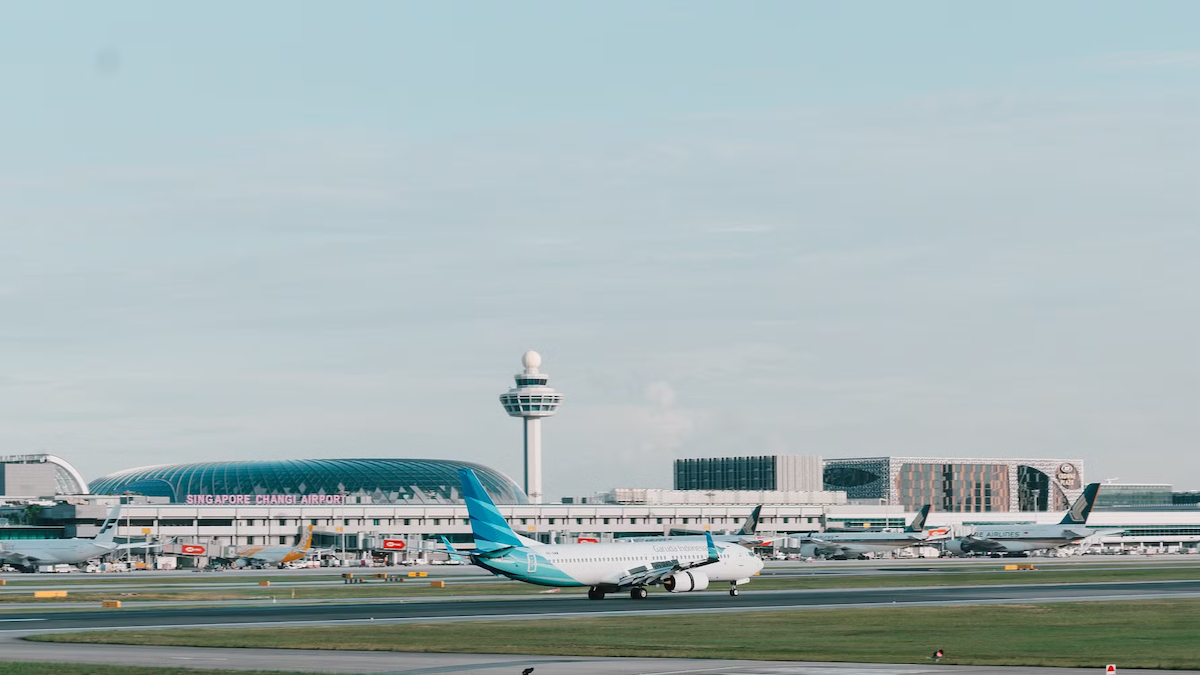Long-haul and medium-haul budget carriers Scoot and Tigerair have today (25 July) officially merged as one entity, operating under Scoot’s brand name.
For cash-strapped students and backpackers, and even for the rest of us who just love good deals, flying on a budget carrier is a familiar mode of transportation to get us to our holiday destinations.
Now, two of Singapore’s favourite low-cost carriers (LCC) have come under the management of the Budget Airline Holdings (BAH), 100 per cent fully owned by Singapore Airlines (SIA). All of Tigerair’s aircrafts will be repainted by mid-2018 to mirror Scoot’s livery.
After the merger, all check-in counters will reflect the Scoot identity.
According to Marketing Interactive, “Scoot’s website and call centre will service all flights under both airlines.”
So what does this mean for the avid budget-flyers (like me)?
1. Less Confusion

CEO of BAH, Lee Lik Hsin said the first course of action they took was to integrate both the airlines’ booking systems to make “things more seamless for our customers.”
He further explained that overseas passengers flying to Singapore on a Scoot flight, then to Bali or Phuket on a Tigerair flight, could not purchase a full package (that includes baggage or meals) cross-platforms.
Although these problems did not greatly affect Singapore-based customers, this integration would bring about a better user experience for all passengers.
It also caused lesser “brand confusion” within SIA, according to Corrine Png, Chief Executive of aviation research firm, Crucial Perspectives.
CAPA Chief Analyst, Brendan Sobie agrees, too, saying that, “Having two brands was always rather messy and unideal.” He added, “[The group] did not have control or a majority stake of its short-haul low-cost affiliate Tigerair.”
Now all flights on the newly-merged Scoot will use the ‘TR’ flight designator code – previously used for Tigerair’s flights – instead of pre-merger Scoot’s ‘TZ’; they will operate under the same Air Operator Certificate, and a new cabin crew uniform was revealed during the merger announcement today.
2. Cheaper Airfares

Good news for us budget travellers!
“By operating under a single airline operator certificate, we will be able to utilise our aircraft more effectively and cost savings from streamlining our operations will be passed onto our customers, allowing us to market our fares more efficiently,” said Lee.
He is confident about the LCC’s competency in the market against other full-service airlines saying, “We will be even more affordable.” A two-way trip to Athens from Singapore is around $600.
3. More Flights To More Destinations
In this merger, Scoot announced five new destinations to Harbin, Kuantan, Kuching, Palembang, and Honolulu – “its first stop in the United States.” Flights to Kuantan will start by the first half of 2018 and the rest of the flights will begin by the end of this year.

In an interview last year, Lee said the merger would increase the number of flights to a particular destination, citing an example of Scoot’s struggles serving passengers flying to Hong Kong.
Previously, there was only one flight there, and three by Tigerair.

Scoot could easily cancel a flight if it was not sustainable, but with the merger, flights would become more regular and passengers would not face any major disruptions to their travel itinerary should one flight be unavailable.
There will be a total of 65 destinations under the brand’s belt after the merger.
Why The ‘Scoot’ Brand?
Lee explained, “The Scoot brand, known for its cheeky and fun vibe as well as innovative products, is well-loved by travellers around the world.”
A Tigerair spokesperson believes that the Scoot brand is “well-known…in the aviation industry” and it will bolster its “marketing presence in Southeast Asia“.
Not surprising, when Scoot’s marketing won the hearts of many, turning what could have been a PR disaster into a marketing promotion.
How Will It Cope With Its Expansion?

Last year, both budget carriers began a large-scale recruitment drive for aircrew. Aiming to double cabin crew numbers, and house 700 pilots by 2020.
After the merger, 23 Airbus A320 from Tigerair will be taken over by Scoot. The total aircraft count as of today will be 37 – including eight Boeing 787-8s, and six 787-9s.
With this merger, Png is positive in her sentiments, stating, “SIA’s integrated budget carrier fleet would grow to about 60 aircraft in five years’ time, making Scoot a major industry player.”
All in all, according to a statement by OCBC Investment Research, it will make management much more easier for BAH with the merge. That means better flexibility for passengers and capacity optimisations with the addition of the aircrafts and routes in their network increases “interlining traffic“.
If you are a current passenger or have other concerns, visit Scoot’s helpful FAQ on its merger here.








